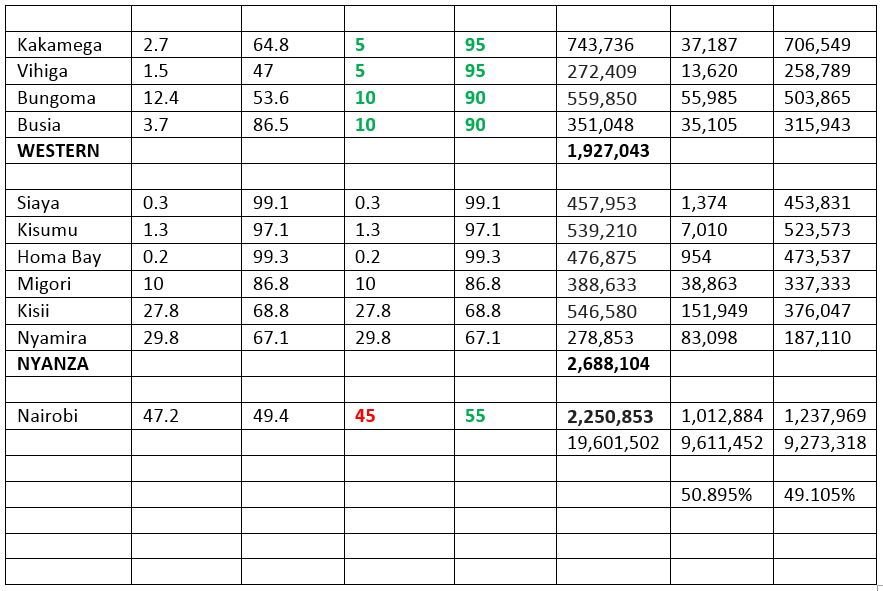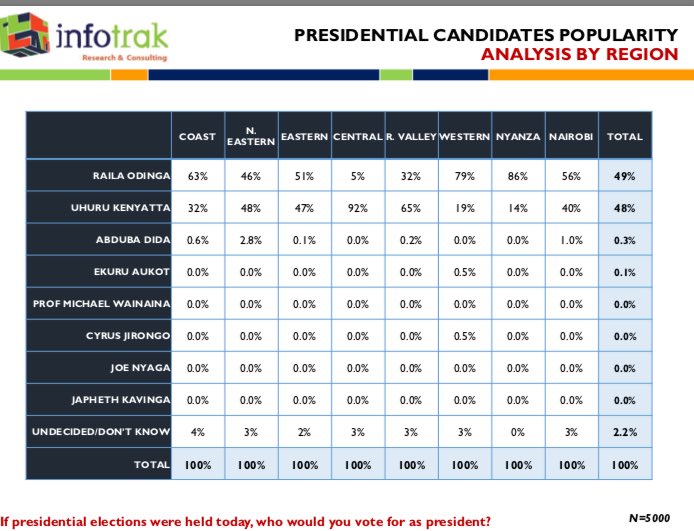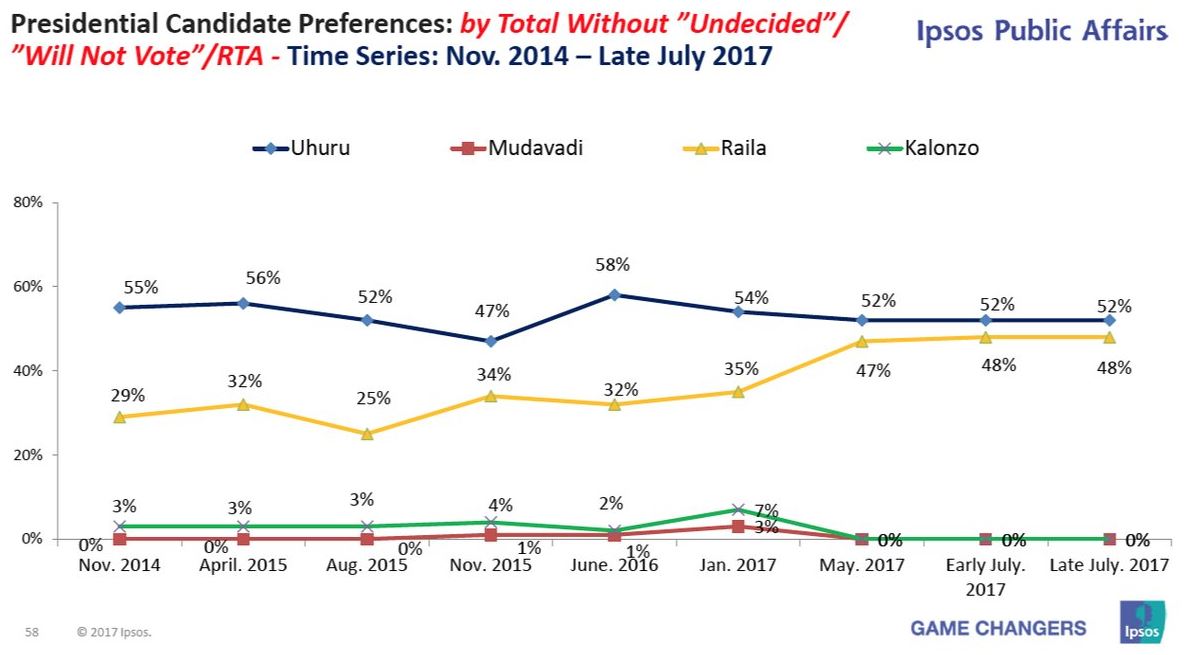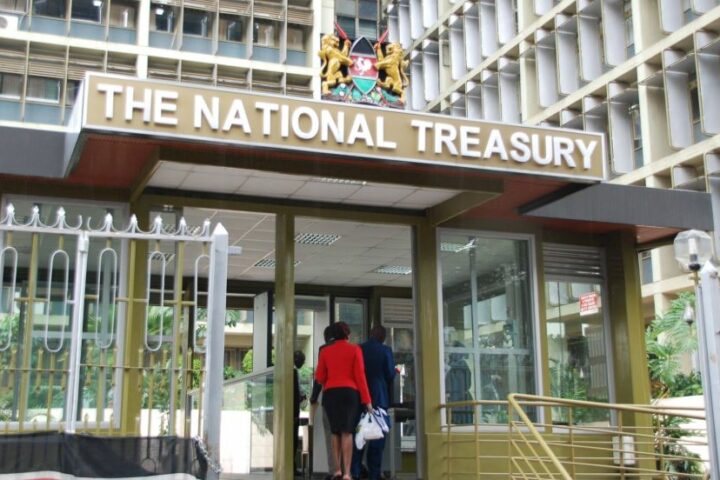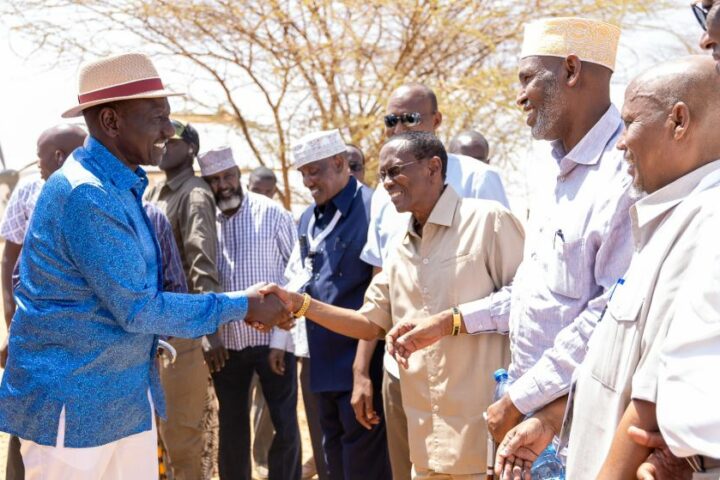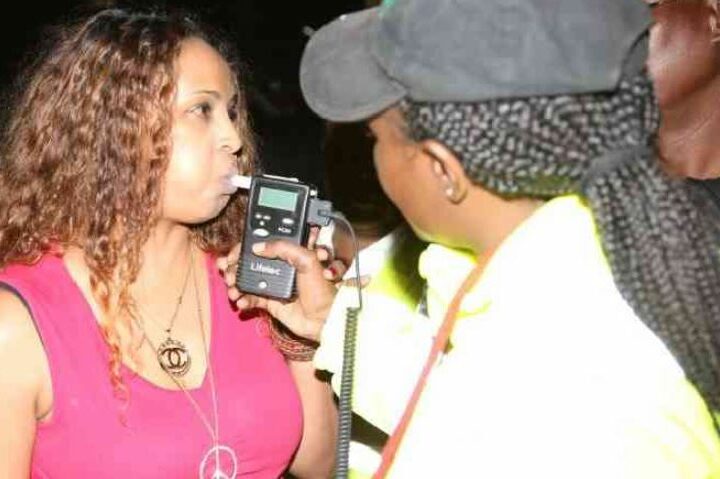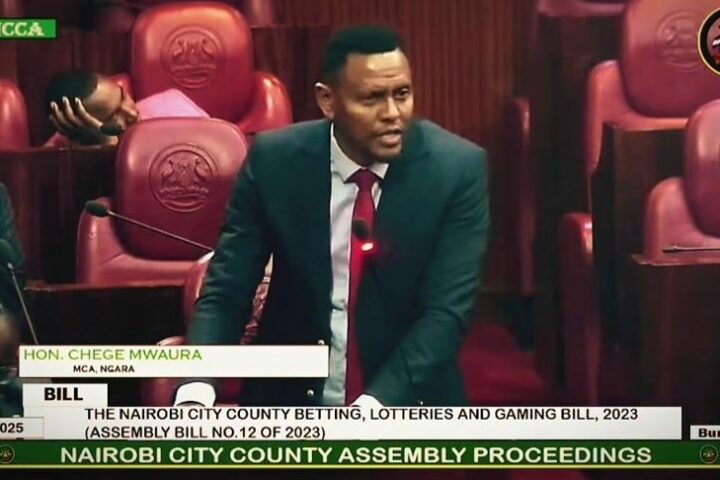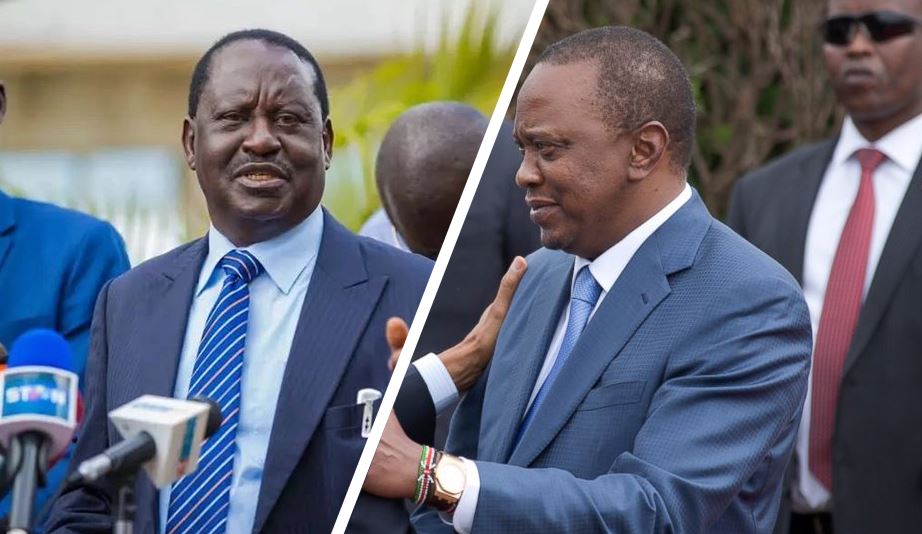 The day is finally here. On Tuesday, Kenyans go to the ballot to elect their leaders for the next 5 years. Politicians have campaigned hard, and now all they can do is wait and hope that Kenyans heard them.
The day is finally here. On Tuesday, Kenyans go to the ballot to elect their leaders for the next 5 years. Politicians have campaigned hard, and now all they can do is wait and hope that Kenyans heard them.
The most watched election will definitely be the presidential election. It has been predicted to be hotly contested, but to be fair, 2007 and 2013 were also similarly close.
This election has been termed ‘Raila’s last bullet’, and you can therefore understand why emotions are running high. Nasa and their supporters have particularly been very hopeful and most of them see a win as a foregone conclusion.
There are however fears of rigging, despite the fact that IEBC has strengthened the electoral process to remove all loopholes.
But the fact is there will be winners and losers. Losing will be hard to the candidates and supporters, but that’s how life is.
The best thing a supporter can do is not get very emotionally invested, and to prepare for any eventuality. Part of this preparation is analyzing the numbers in projections and opinion polls, to find out where you stand.
On this final day before we go to the ballot, we will make a projection based on registration numbers, 2013 voting pattern and Ipsos and Infotrak’s last opinion poll results, which were released last week.
1. Our own internal projection
2. Infotrak projection
3. Ipsos projection
4. Third party projection
1. Our own internal projection
Last week, we published a series of articles detailing counties where both Uhuru and Raila will do better than they did in 2013.
Read: Projection: 5 Counties Raila Odinga Will Perform Better Than in 2013
Read: Projection: 5 Counties Uhuru Kenyatta Will Perform Better Than in 2013
In summary, Nasa candidate Raila Odinga has made inroads in Meru, Bomet, Bungoma, Nairobi, Narok and a few others.
Jubilee candidate Uhuru Kenyatta on the other hand has made inroads in almost all coast counties, and should expect a much better performance than last time.
This observation is supported by county by county opinion poll numbers, and an objective analysis of the ‘mood on the ground’.
We have taken those new percentages, and mapped them on voter registration numbers for every county. From this analysis, President Uhuru Kenyatta will win with 50.895% as Raila comes second with 49.105%.
Assumptions:
1. Removed diaspora and prison votes as they are negligible
2. Every county, (other than the ones either candidate has recorded gains or loses) changes uniformly.
3. The 2013 presidential results are trustworthy and were not doctored.
4. Laikipia, by virtue of its voting pattern and proximity to Central, has been categorized as a Central county.
5. Marsabit has been categorized as an Eastern county.
6. All other candidates get negligible votes.
7. Turnout will be uniform across all counties.
The counties each candidate has gained have their estimated percentages displayed in green, while the loses are displayed in red. All the others are in black.
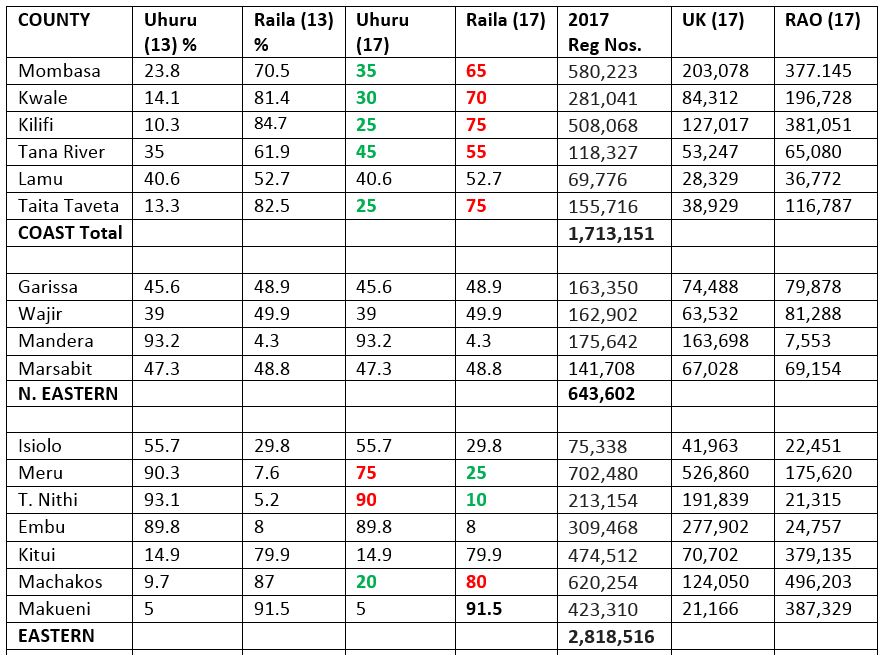
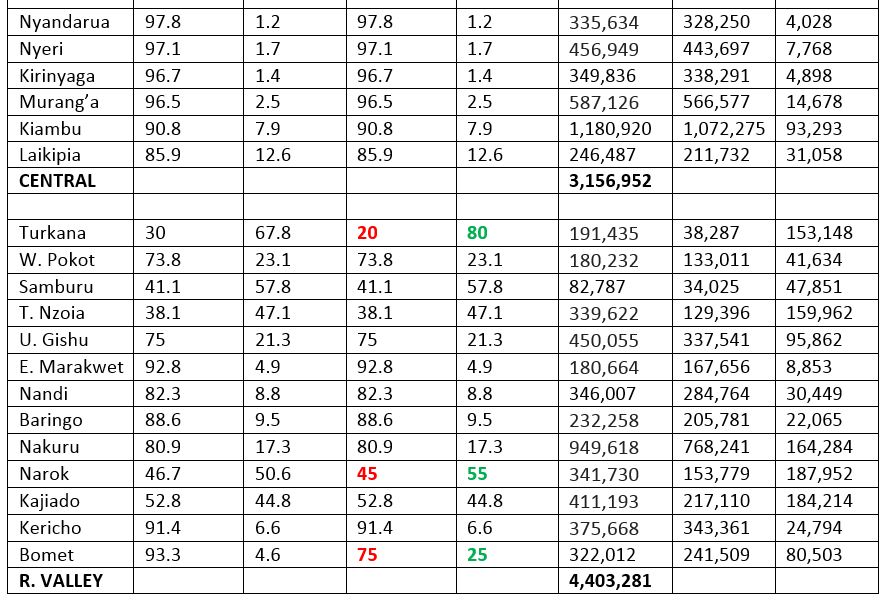
From this projection, the difference between Uhuru and Raila is only 338,000 votes. This is much lower than the 2013 figure of 830,000.
This number is arrived at by assuming turnout will be uniform or not varying greatly between Jubille and Nasa strongholds. The equation can tilt in either side’s favour should they do a better job mobilizing their supporters to get out and vote.
If the IEBC delivers as promised and shuts down all rigging loopholes, it is believed that the turnout may drop drastically. In 2013, most counties from all sides, with the exception of those at the coast, were hovering at over 80%. Those from Central and Luo Nyanza in particular performed unbelievably well, all recording over 90% turnout.
This record turnout was a bit suspicious to most analysts considering most counties struggled to reach 60% in the 2002, 2005, 2007 and 2010 voting exercises.
Based on this model, and if we ignore all the controversies surrounding the turnout and assuming there will not be a big shift, Uhuru Wins.
Uhuru Kenyatta- 50.895%
Raila Odinga – 49.105%
[showad block=6]
2. Infotrak prediction
Pollster Infotrak released their final opinion poll on Tuesday last week. It went against the grain by being the only one predicting a Raila Odinga win.
Read: Final Opinion Polls: Ipsos Predicts 52% Round One Victory for Uhuru, Infotrak Disagrees
The Infotrak poll placed Raila ahead with 49% with Uhuru trailing with 48%. Only 2% were found to be undecided.
The way pollsters make their predictions is by taking the total respondents and calculating what percentage supports either candidate.
However, in the Kenyan context, this formula can often produce misleading results. This is because each county/region has different registration figures. The pollsters try to correct this by sampling a different numbers from different counties based on the number of voters. But with an election this close, this too can cause issues.
While releasing the poll, Infotrak also categorized each candidate by what percentage they should expect in the former provinces.
Here’s a break down.
What we did is take these percentages per province, and put them side by side against the registered voters in those provinces. We completely removed the undecided from the equation and ignored all the other candidates.
Our analysis conflicted with what Infotrak announced, in that Uhuru has a slight edge.
Assumptions:
1. Laikipia categorized as a Central province county.
2. Marsabit categorized as a North Eastern province county.
From this analysis, the gap between the two is just under 117,000, and turnout here can change a lot. Uhuru wins with 50.31%.
What about when we place Laikipia county in the Rift Valley and Marsabit in Eastern, as they were classified before the new constitution?
This would change the vote numbers for 4 provinces, namely Central, Rift Valley, Eastern and North Eastern. And as you can see from this table, things are even more elephant for both candidates.
Uhuru still wins, but this would probably be the closest presidential election in the history of democracy all over the world.
The difference between the two is a mere 660 votes.
But still, that’s 659 more than is required by the law for the purpose of a round one victory.
Therefore, in this Infotrak model: Uhuru Wins
3. Ipsos projection
Well, with Ipsos, we do not need to make tables or Excel calculations. If we believe the figures they gave us, then Uhuru will be re-elected with 52% of the vote.
The Ipsos poll released last week gave Uhuru 47% and Raila 44%. The undecided were found to be 5%.
However, Tom Wolf went ahead and removed the undecided from the equation, calculating each candidate’s percentages based on what remained.
That’s where Uhuru’s number rose to 52%. And from this chart, you can see that Uhuru has stabilized at 52% for the past 3 opinion polls.
Therefore, according to Ipsos: Uhuru Wins
4. Third party projection
And for the final projection, I encountered probably the most detailed calculation by author and historian Charles Honsby, on ‘The Elephant’ publication where he is a contributor.
Charles goes into incredible detail, explaining how he made his projection, the methodology, and most importantly, adjusting for turnout.
According to him, Uhuru will carry the day with 52% of the votes.
Charles goes ahead to predict how the counties will vote, also giving Jubilee a majority of the governors.
Read his analysis HERE.
I’m yet to come across a single well-thought out analysis of numbers or opinion poll that has Raila ahead. Obviously the Nasa candidate has led in virtually all social media polls, but we have learnt that these go against all basics of random sampling and are not representative.
That said, if Raila manages to perform better in the turnout department, he just may pull one on Uhuru.
From the 5 projections above, Uhuru’s score comes at an average of 51.04%.
But if 2013 turnout numbers remain constant, Jubilee would have an even bigger margin of victory.
Therefore, we project that Uhuru Kenyatta will win with 51-54%
Correction: An earlier version of this article had listed Charles Honsby as the owner of ‘The Elephant’. We have since learned that he is a contributor.
